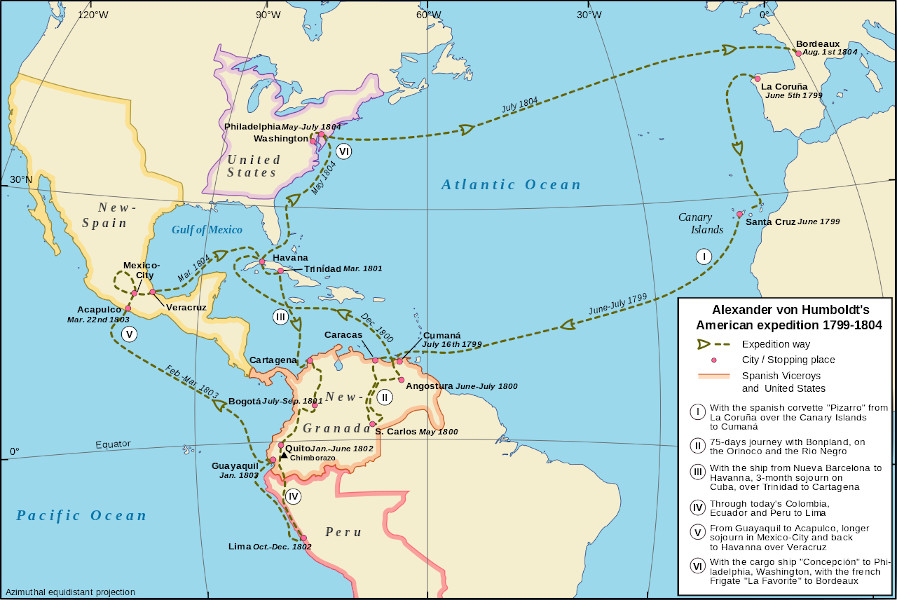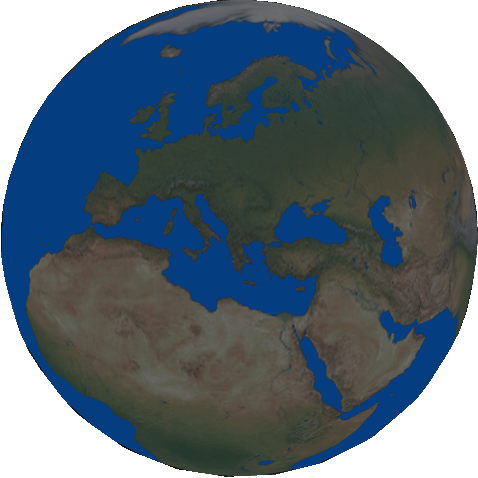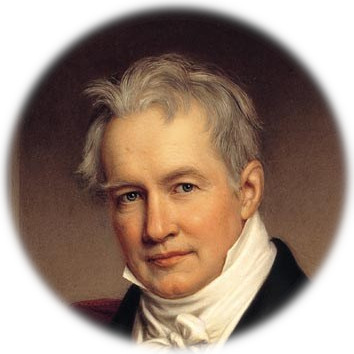Spanish American expedition, 1799–1804
06/05/1799 AD departed
Between 1799 and 1804, Humboldt travelled extensively in the Americas, exploring and describing them for the first time from a modern scientific point of view. His description of the journey was written up and published in several volumes over 21 years. Humboldt was one of the first people to propose that the lands bordering the Atlantic Ocean were once joined (South America and Africa in particular).
Armed with authorization from the King of Spain, Humboldt and Bonpland made haste to sail, taking the ship Pizarro from A Coruña, on 5 June 1799. The ship stopped six days on the island of Tenerife, where Humboldt climbed the volcano Teide, and then sailed on to the New World, landing at Cumaná, Venezuela, on 16 July.
The ship's destination was not originally Cumaná, but an outbreak of typhoid on board meant that the captain changed course from Havana to land in northern South America. Humboldt had not mapped out a specific plan of exploration, so that the change did not upend a fixed itinerary. He later wrote that the diversion to Venezuela made possible his explorations along the Orinoco River to the border of Portuguese Brazil. With the diversion, the Pizarro encountered two large dugout canoes each carrying 18 Guayaqui Indians. The Pizarro's captain accepted the offer of one of them to serve as pilot. Humboldt hired this Indian, named Carlos del Pino, as a guide.
Subjects Who or What departed?
-
Alexander von Humboldt German polymath, geograp...
Timelines (that include this event)
Events in 1799 MORE












